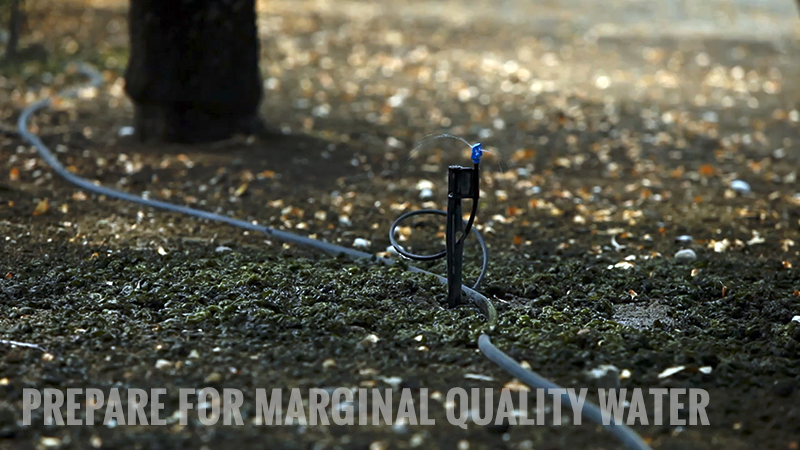Improve Cherry Production with Plant Growth Regulators
This article discusses potential uses of plant growth regulators (PGRs) in sweet cherry production; labels for commercial use may vary from product to product, state to state, and country to country, and recommendations for use may even vary from packing shed to packing shed based on target markets. So, cherry growers must determine the availability, legality, and appropriateness of any potential uses in their orchards.
At the 2019 Washington State University WSU Cherry School, Byron Phillips of Wilbur-Ellis prefaced his presentation on PGRs with the simple truth that the most powerful plant growth regulators for many aspects of orchard management are loppers, secateurs, and chain saws.
Indeed, the majority of my cherry research career has focused on pruning and training as the most reliable method to influence canopy architecture and leaf-to-fruit ratios to achieve and maintain desirable tree structures and fruit quality. However, it is great to have PGRs as additional tools for fine-tuning various orchard management tasks.
One of the main challenges for effective incorporation of PGR use in sweet cherry orchard management is that plant responses can vary due to cultivar, growing conditions, and climatic conditions both at the time of application (uptake/absorption) and afterwards (PGR activity). Thus, it is not reliable to make blanket recommendations ― as with most aspects of growing fruit, a little on-farm, small-scale experimental trialing may be needed to determine the most effective ways to treat individual orchard blocks.
TREE TRAINING AND CANOPY MAINTENANCE
The primary PGR tools to achieve desired canopy architectures and modulate canopy maintenance are growth promoters, such as gibberellins (GA4+7) and cytokinins (6-benzyladenine or 6-BA), and growth inhibitors, such as prohexadione-calcium (P-Ca) and paclobutrazol (PP333).
Commercial formulations of each of these, except paclobutrazol, have some registrations for cherry in the U.S., such as Promalin and Perlan (6-BA plus GA4+7), MaxCel (6-BA), and Apogee and Kudos (P-Ca), which also is called Regalis in some other countries. Although paclobutrazol (Cultar) can be used in some cherry-producing countries (e.g., China, Spain, New Zealand, and Australia), in the U.S. it is only registered for use in the turf (Trimmit) and greenhouse (e.g., Bonzi, Downsize, Paczol, and Piccolo) industries.
The most common use of the growth promoters is to induce lateral branching on young trees during canopy development. These can be applied in paint at bud swell to sections of leaders or scaffolds, or individual buds; however, results may be minimal if cool weather follows application.
Alternatively, foliar spray applications can be directed at the target leader or scaffold sections as spur leaves emerge and expand, or later to extending leaders at points where sylleptic lateral branch formation is desired. Spray applications have the additional advantage of usually concurrent warmer temperatures for better growth activity.
Prohexadione-Ca suppresses branching and new shoot elongation. Depending on plant vigor, it may need to be re-applied several times during the growing season to achieve the desired level of growth suppression. First applications can be made at 1 to 3 inches of initial shoot elongation, and then reapplied at the first sign of renewed growth.
Consequently, it may be feasible to allow a desired level of new growth to occur, then apply P-Ca to stop further growth, reduce the need for summer pruning, and not affect growth potential the next season. Paclobutrazol is a much stronger inhibitor and may suppress growth in subsequent years as well, which is one reason it is not available for use in fruit trees in the U.S. Suppression of branching with P-Ca may be of increasing interest for developing and maintaining training systems like the UFO and KGB that are focused on vertical, unbranched leaders for mature canopy fruiting structure.
FRUIT QUALITY
The primary PGR tools to improve sweet cherry fruit quality ― primarily fruit size ― include the gibberellins GA3 (e.g., ProGibb, Falgro) and GA4 (Novagib), forchlorfenuron (CPPU, Splendor), and the brassinosteroids (homobrassinolide, HBR). Increased fruit size has been reported from applications of GA4 from tight cluster to petal fall, and of CPPU from bloom to shuck split (also at straw color, which has been reported to reduce susceptibility to cracking somewhat).
GA3 and HBR applied at straw color, with or without a second application (usually repeated for heavier crop loads), can lead to increased size, sugar content, and firmness at harvest; HBR tends to advance and synchronize ripening, while GA3 tends to delay and synchronize ripening. Use of GA3 may reduce red blush development on yellow cherries like ‘Rainier’.
Applications of GA3 at 2 to 4 weeks after bloom can reduce flower bud formation for the subsequent year, thereby altering the leaf area-to-fruit ratio with possibly favorable results on crop load, fruit set , and fruit quality. Finally, some experimental work has found applications, at leaf emergence/expansion, of BA-6, GA4+7, and the mix of the two can increase spur leaf expansion and final size, resulting in improved leaf area-to-fruit ratios and presumed favorable impacts on fruit quality.
ORCHARD PRODUCTIVITY
The primary PGR tools that can impact orchard productivity involve ethylene: the generation of ethylene from ethephon (e.g., Ethrel, Motivate) and the suppression of natural plant-synthesized ethylene with aminoethoxyvinylglycine (AVG, e.g., ReTain). Ethephon applications in the fall (early September) have shown some promise in promoting cold acclimation and delaying subsequent bloom in spring by three to five days, which may reduce the potential for spring frost damage. Delayed bloom also may help synchronize bloom times of cross-pollinating cultivars that otherwise don’t quite match up well, thereby resulting in improved fruit set.
Ethephon applications prior to harvest can be used to promote fruit ripening, coloration, and abscission, but usually are used only for mechanical harvest of processing cherries since they also can promote undesirable fruit softening of fresh market fruit. Ethephon applications may induce gummosis to varying degrees, depending on temperature or tree stress at the time of application. While unsightly and certainly a resource cost to the tree, ethylene-induced gummosis usually has no long-term negative effects on tree health.
The use of AVG during bloom has increased in recent years to extend ovule receptivity for pollen fertilization and therefore improve fruit set, especially in less productive cultivars like ‘Regina’, ‘Tieton’, and ‘Benton’. Applications usually are made twice, at the beginning of bloom (10% to 20% of full bloom) and at 50% full bloom.










